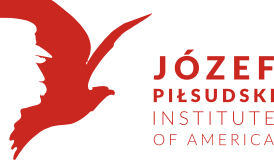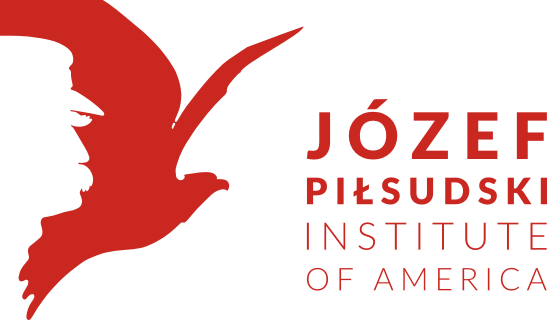 The Jozef Pilsudski Institute of America was established on July 4, 1943 in New York City as a major research archival and science institution for research of modern history of Poland. It was founded by a group of Polish-American community leaders, prominent Polish statesmen, and political expatriates. Among them were Franciszek Januszewski, publisher of Dziennik Polski in Detroit, Maksymilian Węgrzynek publisher of Nowy Świat in New York and three pre-war Polish government members: Ignacy Matuszewski, Wacław Jędrzejewicz, and Henryk Floyar-Rajchman. The Institute was established for the purpose of continuing the work of the Institute for Research of Modern History of Poland established in Warsaw in 1923. In 1936, the name of Jozef Piłsudski was added to the name of the institute.
The Jozef Pilsudski Institute of America was established on July 4, 1943 in New York City as a major research archival and science institution for research of modern history of Poland. It was founded by a group of Polish-American community leaders, prominent Polish statesmen, and political expatriates. Among them were Franciszek Januszewski, publisher of Dziennik Polski in Detroit, Maksymilian Węgrzynek publisher of Nowy Świat in New York and three pre-war Polish government members: Ignacy Matuszewski, Wacław Jędrzejewicz, and Henryk Floyar-Rajchman. The Institute was established for the purpose of continuing the work of the Institute for Research of Modern History of Poland established in Warsaw in 1923. In 1936, the name of Jozef Piłsudski was added to the name of the institute.
The Institute houses a rich collection of primary sources covering the period from the 1863 Insurrection to the present day. The collection includes documents, photographs, films, posters, periodicals, books, personal memoirs of diplomats, and political and military leaders. The archival collection contains over one million documents, or 150 linear meters of shelf space. It is one of the largest and most important archives outside of Poland. The most important documents relate to the following subjects: the Polish-Bolshevik War of 1919-1922, Marshal Jozef Piłsudski, the Silesian Uprisings of 1919-1921. Diplomatic papers of ambassador Jozef Lipski from Berlin, of Juliusz Lukasiewicz from Paris, and papers of General Kazimierz Sosnkowski, as well as many other documents of prominent diplomats and military officers are archived in the Institute. The archive also includes records of individual Polish-Americans and of Polish-American Institutions.
The Library contains about twenty thousand books and many rare manuscripts mainly related to the modern history of Poland. Many books were donated together with archival collections.The library has a large magazine, periodical and newspaper collection of more than 3,000 titles. A separate section contains Polish journals, many published outside of Poland. Among the most important are those of Na Straży from Jerusalem, Tygodnik Polski, The Polish Review and Polish DP Camps Press. There are over 1,350 titles from the Polish Underground Press publications (from mid-1970s to 1990). The independent press collection at the Institute is one of the largest in the USA.
The Institute also houses 20,000 photographs covering the period from the beginning of twentieth century related to Polish and European political, military and cultural institutions, events, and personalities. These photographs were donated by individuals and organizations such as The Committee of Americans of Polish Descent and The Committee to Help Solidarity. Many photographs in the collection are unique. The most important ones are of the Jozef Piłsudski and Polish Legion, Polish Army and Polish children in the Soviet Union during World War II. Photographs from our collections are frequently used by American and Polish media and in exhibitions and publications.
The Institute has 2,450 maps from the second half of the nineteenth century through 1999. They fall into the following categories: political, administrative, ethnographic, physical, military and general information. A large group of maps were published by the Military Geography Institute. There is also a complete set of sketches and maps relating to the Battle of Warsaw of 1920.
The Institute's gallery contains an art gallery with more than 240 items. They include oil paintings, watercolors, drawings and illustrations by such artists as Jan Matejko, Józef Chełmoński, Juliusz Kossak, Tadeusz Styka, Alfred Wierusz-Kowalski, Leon Wyczólkowski, Aleksander Gierymski, and Jacek Malczewski. The collection includes individual portraits of well-known individuals such as Nicholas Copernicus and Tadeusz Kosciuszko. Most of the Polish paintings at the Pilsudski Institute are generous gifts from Aleksander Melen-Korczynski, and Stanisław and Zofia Jordanowscy. Janina Czermanski donated more than 50 artworks painted by her husband Zdzislaw Czermanski. The Institute also houses a collection of military and civilian decorations, regimental badges, stamps, postcards and posters, coins, banknotes, and uniforms.
The Institute’s main activities include acquisition and preservation of historical materials and making them available to the public, organization of exhibitions, conferences, seminars and lectures. The Institute publishes a monthly and an annual bulletin, as well as books and scholarly publications. Every year many scholars from all over the world use the Pilsudski Institute archives, many researchers who can not come order preliminary archival research which is made by the Institute volunteers.
During more than half century the Institute published among others, the following books and documents: Kazimierz Sosnkowski, Materialy Historyczne, “Gryf” , Londyn 1972, Juliusz Łukasiewicz, Dyplomata w Paryżu 1936-1939 ( eds. Henryk Bułhak and Wacław Jędrzejewicz, Polska Fundacja Kulturalna, Londyn 1988), Wacław Jędrzejewicz, Janusz Cisek, Kronika życia Józefa Piłsudskiego, t. I-III, Ossolineum, Wrocław 1994. The best known book is the Kronika Życia Józefa Piłsudskiego, Polska Fundacja Kulturalna, Londyn 1977. During 1948- 2004, the Institute published annually the historical journal Niepodleglosc.
Today the Institute offers programs open to the public of seminars, conferences, encounters with historians, book promotions and documentary film screenings. Every few years the Institute hosts an Awards Gala to honor achievements of outstanding individuals in the field of history, art, science, literature, and leadership.
The Pilsudski Institute cooperates with many major US universities and organizations, among them Columbia University, Central Connecticut State University, as well as with the New York Public Library, the Library of Congress, and the Metropolitan Library Council. There are also close contacts with Polonia organizations such as the Polish Institute of Arts and Sciences of America, Polish Army Veterans Association of America and the Kosciuszko Foundation. After the fall of communism in Poland in 1989, the Institute initiated scientific exchanges with institutions in Poland. Since 2001, the Institute has collaborated with the Head Office of the State Archives, the Foundation for Polish Science, the National Library in Warsaw, the Polish Senate, Semper Polonia Foundation, Stowarzyszenie Wspólnota Polska, and Polish Institute of International Affairs.With funds from the Ministry of National Culture and Heritage and the Polish Senate, the Institute modernized its archival collections. Since 2001 several professional interns have been working in the Institute’s archives and library modernizing the respective collections. The Pilsudski Institute and the Head Office of the State Archives have worked together on conserving, microfilming and digitizing our collection of Silesian Uprisings of 1919-1921, as well as on a new digitalization project including Internet presentation of collections that are housed in Poland and in New York.
The Pilsudski Institute will continue its activities and serve research needs of scholars and popularize Polish culture and history.
{plusone}









